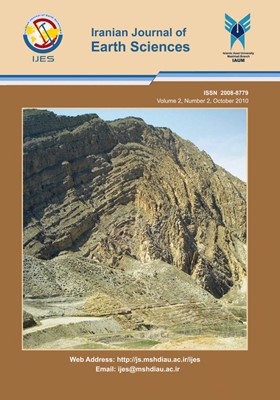-
-
List of Articles
-
Open Access Article
1 - Petrochemical Characteristics of Neogene and Quaternary Alkali Olivine Basalts from the Western Margin of the Lut Block, Eastern Iran
S. Saadat M. H. Karimpour Ch. Stern -
Open Access Article
2 - Application of glauconite and fossil palynomorphs in reconstructing the Liassic paleogeography just before the opening of the Gulf of Mexico
J. Rueda –Gaxiola -
Open Access Article
3 - Shrimp Culture Impact on the Surface and Ground Water of Bangladesh
A. K. M. Munirul Haque M. Sarwar Jahan Md. Abul Kalam Azad -
Open Access Article
4 - Using Wind Data to Predict the Risk of Volcanic Eruption: An Example from Damavand Volcano, Iran
M. Mortazavi R.S.J. Sparks -
Open Access Article
5 - A Seismic Factor of Radon Danger on a Case Study of Armenia
E. Saghatelyan A. Saghatelyan A. Petrosyan H. Asmaryan -
Open Access Article
6 - Hydro-Geological Context of Mikkes Springs and Different Variations of their Flows (Morocco)
K. Belhassan -
Open Access Article
7 - Combating Climate Change: The Role of Renewable Energy and Energy Efficiency
E. Uyigue O. A. Ediang A. A. Ediang -
Open Access Article
8 - Geology and Mineralization of Bikilal phosphate deposit, Western Ethiopia, implication and outline of gabbro intrusion to East Africa zone
W. Mammo Ghebre -
Open Access Article
9 - Genetic Issues of Some of the Non Metallic Minerals in Lesser Himalaya
R. Sharma P. Joshi P. Verma -
Open Access Article
10 - Estimation of erosion and sediment yield of Ekbatan Dam drainage basin with EPM, using GIS
S. Amini B. Rafiei S. Khodabakhsh M. Heydari
-
The rights to this website are owned by the Raimag Press Management System.
Copyright © 2021-2025







